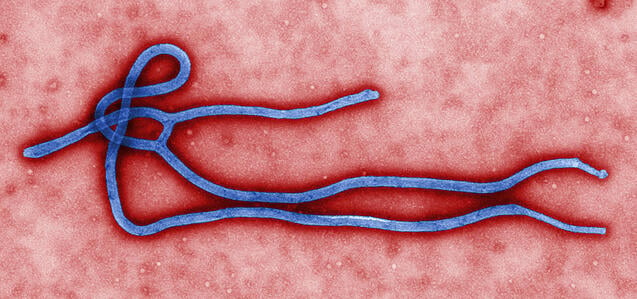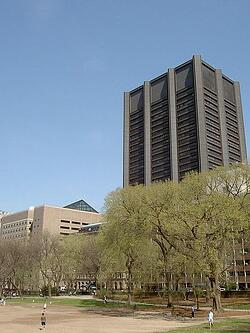
Ebola-stricken areas in West Africa may have renewed hope in the form of researchers at the Icahn School of Medicine at Mount Sinai in New York, NY, and the National Institutes of Health. According to a study published on December 17, 2014, and headed by Dr. Adolfo Garcia-Sastre, researchers have identified 53 drugs with the potential to block Ebola virus-like particles from entering human cells, a key step in the process of infection. With death tolls on the rise in West Africa, researchers are encouraged to have some promising leads in the investigation into possible treatments for this lethal and rapidly spreading menace.
Ebola: The Scourge of West Africa
According to the Centers for Disease Control and Prevention, the current Ebola virus outbreak has been responsible for the deaths of 7,373 people (as of December 19, 2014) in 2014 alone. Sierra Leone is the most heavily affected region with 8,273 reported cases and an estimated mortality rate of nearly 70% in many areas. In response to these terrifying figures, President Ernest Bai Koroma has gone as far as to cancel Christmas and New Year’s celebrations as well as to ban all public gatherings and inter-district movement, according to CTV reports.
 "In light of the historic and devastating outbreak of Ebola virus disease, there is an urgent need to rapidly develop useful treatments against Ebola infection, and our study results argue that repurposing existing drugs may be among the fastest ways to achieve this," says lead author Adolfo García-Sastre, PhD, director of the Global Health and Emerging Pathogens Institute within the Icahn School of Medicine at Mount Sinai.
"In light of the historic and devastating outbreak of Ebola virus disease, there is an urgent need to rapidly develop useful treatments against Ebola infection, and our study results argue that repurposing existing drugs may be among the fastest ways to achieve this," says lead author Adolfo García-Sastre, PhD, director of the Global Health and Emerging Pathogens Institute within the Icahn School of Medicine at Mount Sinai.
New Hope in the Form of Existing Drugs
While fully intact Ebola virus is a biosafety level (BSL) 4 pathogen and dangerous to work with, the team created a virus-like particle comprised of the Ebola proteins (glycoproteins and matrix proteins) that enable the virus to enter cells, but without many of the genes and proteins that make the virus deadly.
Of the 2,816 compounds investigated by researchers, 53 were found to block the mimicked virus from entering human cells. Among them were cancer drugs, antihistamines, antibiotics and selective serotonin reuptake inhibitors (SSRIs) used to treat depression. Some of these drugs also demonstrated an ability to reduce the steps of the Ebola lifecycle.
“NCATS is all about getting more treatments to more patients more quickly, and this is never more urgent than in the case of a public health emergency like Ebola,” said Christopher P. Austin, MD, Director of the National Center for Advancing Translational Sciences (NCATS), part of the NIH, which also led the study. “This remarkable team of scientists combined NCATS’ expertise in drug screening and development with Mt. Sinai’s expertise in Ebola virology to rapidly identify candidate treatments for Ebola infection.”
Moving Forward
For the next step, the researchers will test the drugs in animal trials to assess what their risk for side effects is when repurposed to prevent Ebola infection. Any drugs that prove to be safe and effective in animals may be deployed in outbreak areas.
"Many of the compounds identified in this study promise to become lead compounds in near-future drug development efforts studies targeting this virus," says García-Sastre. “Not all of these drugs will work, but we hope some of them will. The dose that is required for treatment may be too toxic. These are still things that need to be studied. But at least there are some promising candidates that can be tested quickly. Then we can see whether any of these drugs are promising when used alone or in combination with other drugs to make a big impact on decreasing disease and mortality.”
Icahn School of Medicine: Research Marketplace and Industry Leader
This study was supported by grants from NCATS and the NIH. The development of antiviral screen assays in Dr. García-Sastre’s lab was also supported by NIH grants (R01AI079110 and R01AI089539). This and many other exciting research projects are ongoing at the Icahn School of Medicine at Mount Sinai; with over $600 million in life science research, this school is poised as a leader in medical research and had a 2012 life science R&D expenditure of over $400 million.

Lab supply vendors in search of research markets in which to make their products available should plan on attending the 2015 BioResearch Product Faire™ Event at Mount Sinai. With an expected attendance of over 200 active life science researchers, this event is the premiere opportunity to ensure that researchers have access to the latest research equipment and laboratory supplies. For more information about exhibiting at Mount Sinai in March 2015, please visit the link below:
Biotechnology Calendar Inc. is a highly respected full service event marketing and planning company that has been producing life science tradeshows at research universities for more than 20 years.








